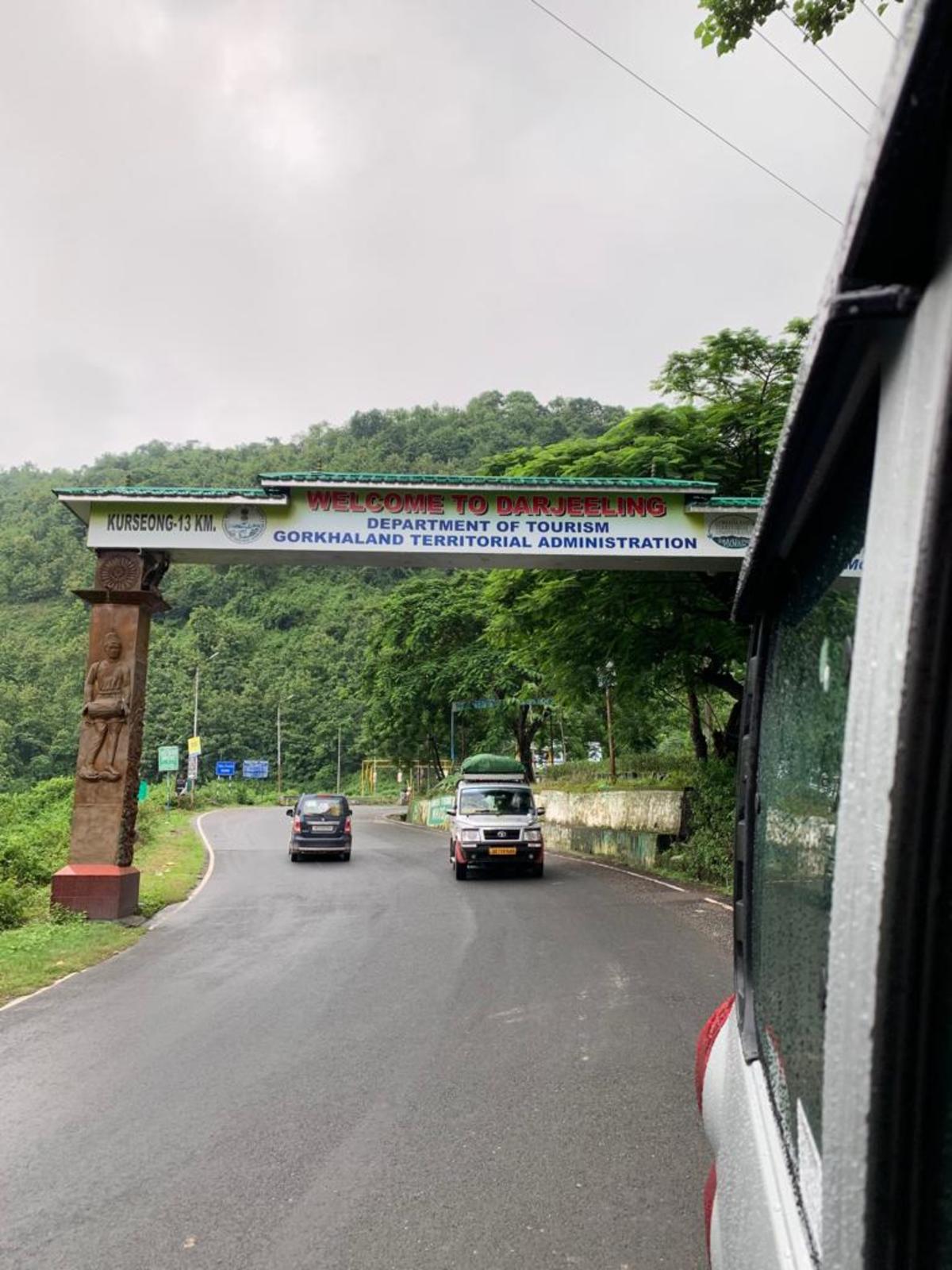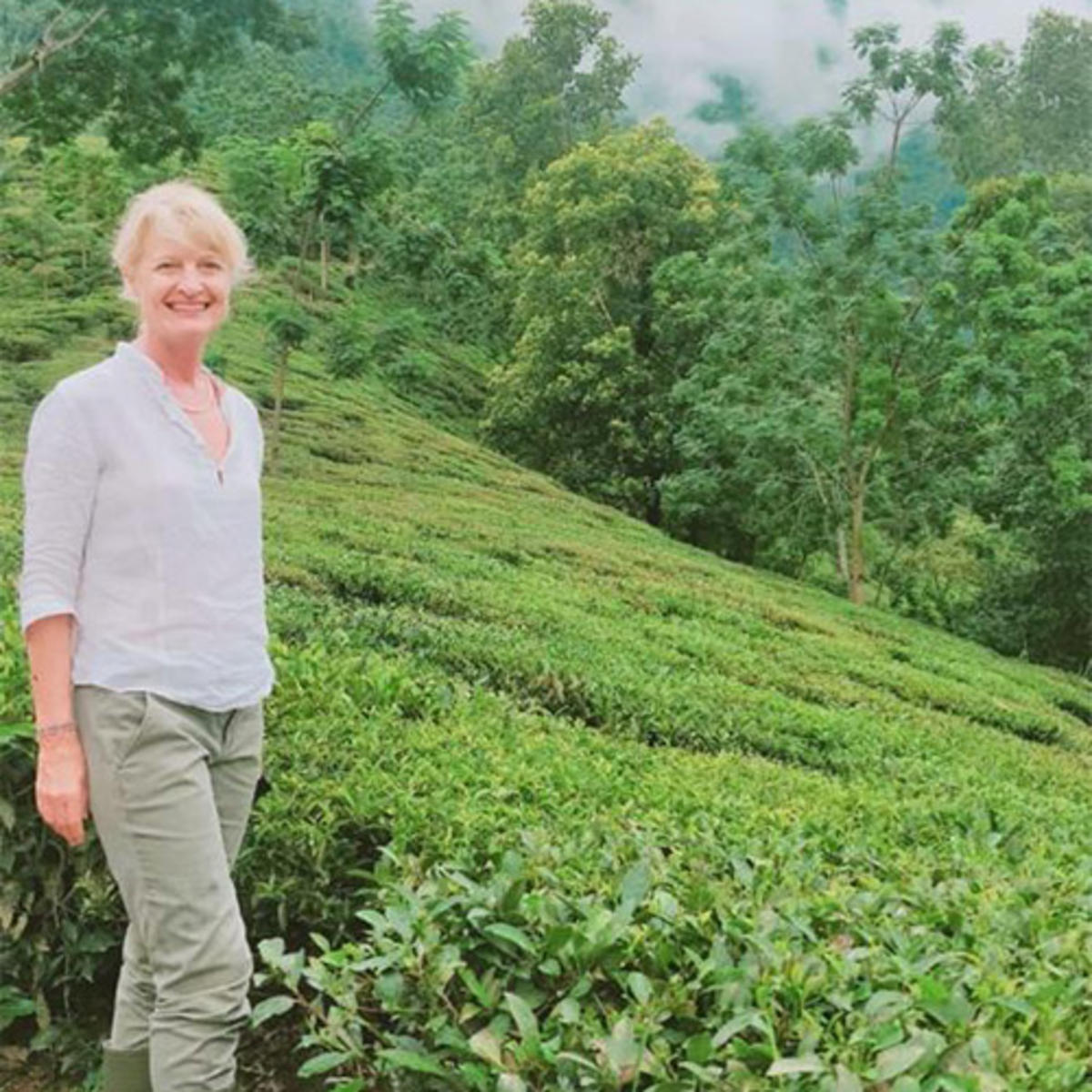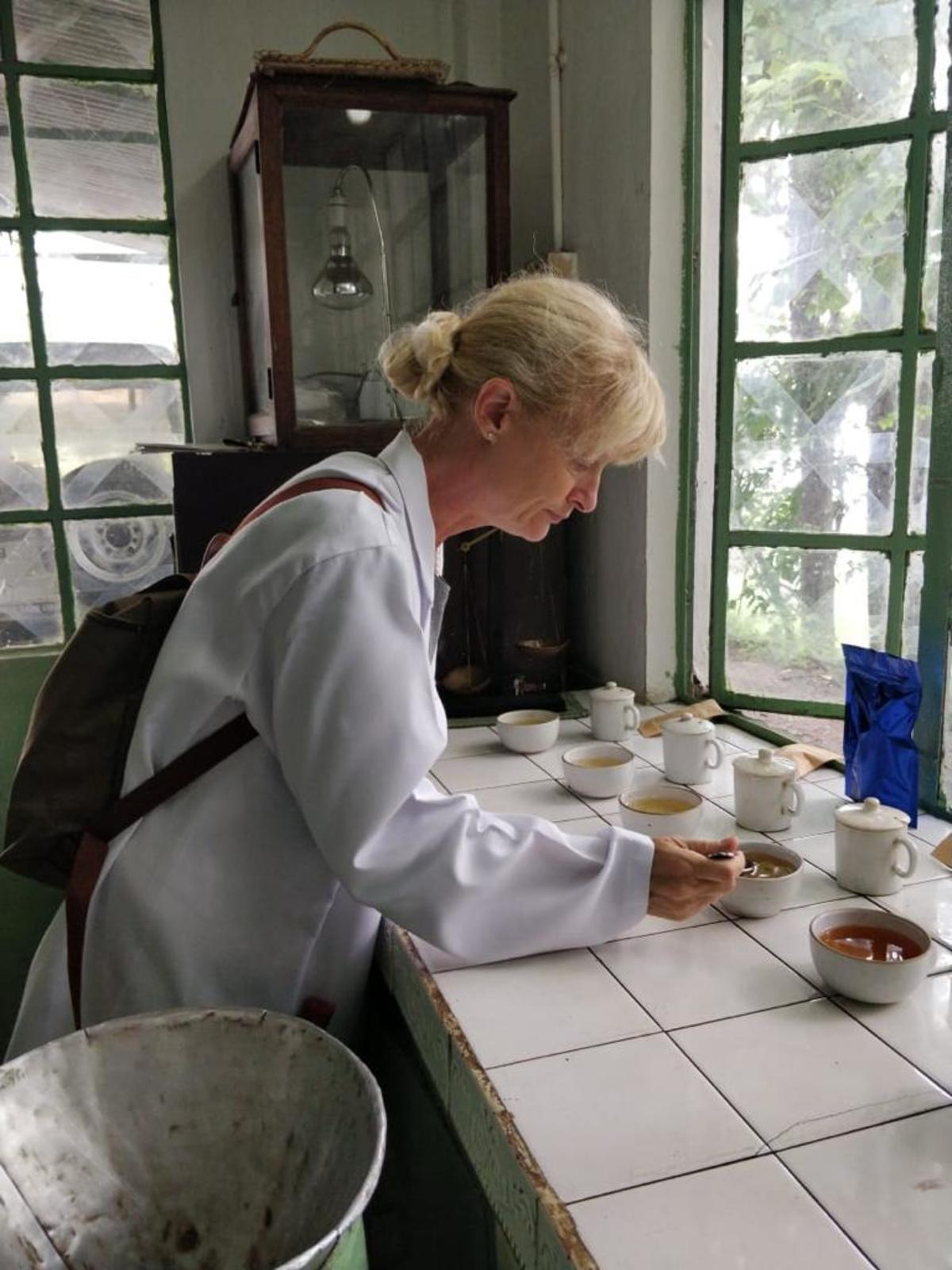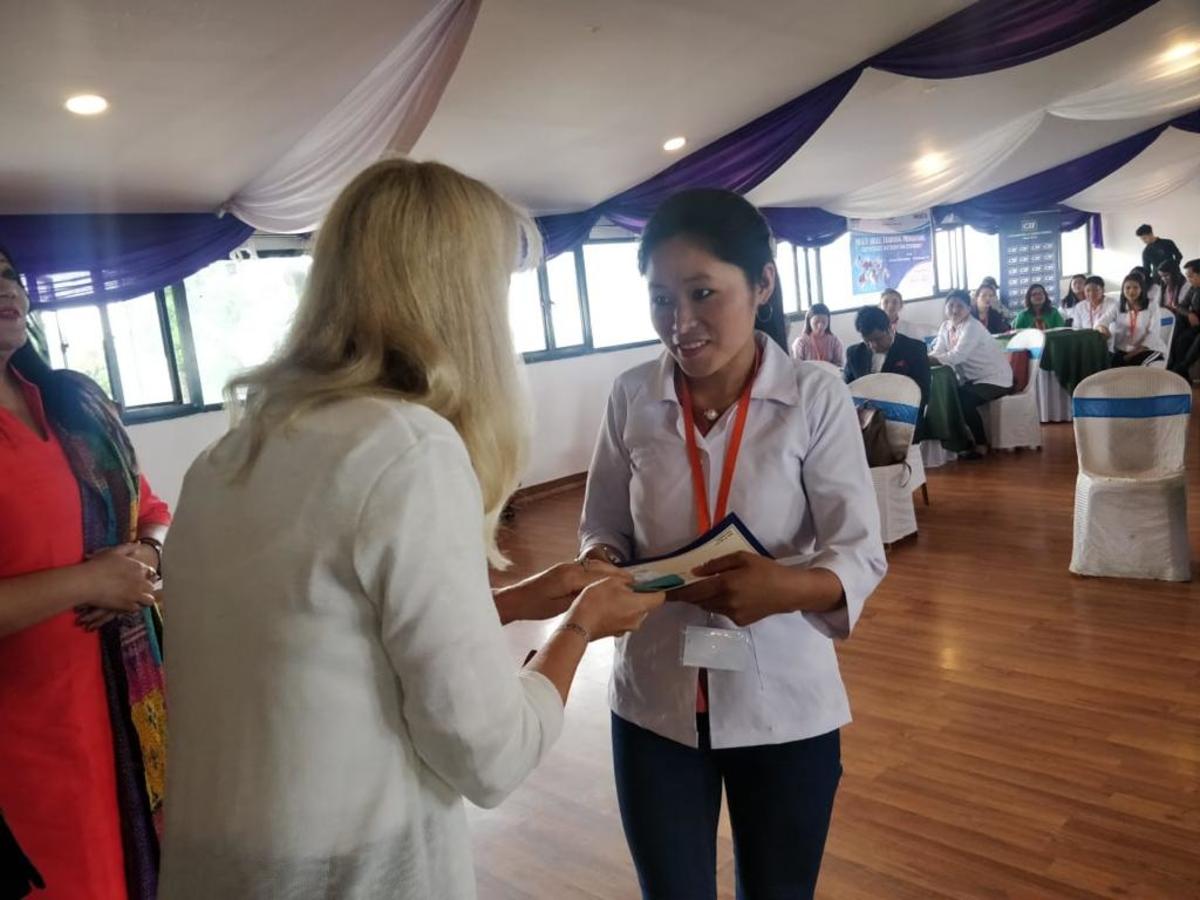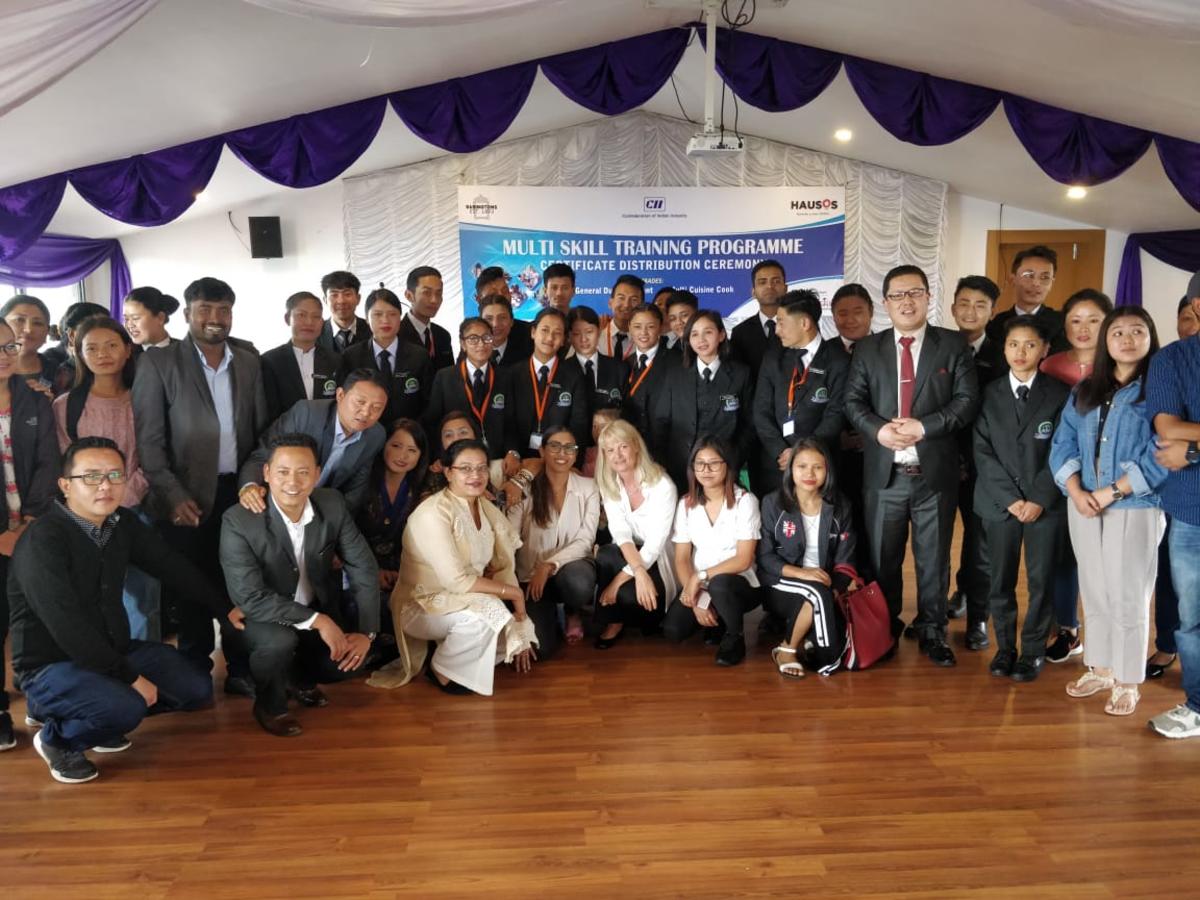Chiara's diary in Darjeeling
As often happens, the case - and I don't believe in the case! - wanted Corrado Topi, husband of the director of our tea room, to be a partner of Anneysa Ghosh, an enterprising and very smart young Indian woman who takes care of sustainability projects in India.
His great research work in northern India has allowed us to create Babingtons for Darjeeling, a project aimed at young "drop-outs" from the Darjeeling region. a very small Indian region on the border with China. Why right there? Because the first tea served by Isabel and Anna Maria in their brand new tea room in 1893 was a Darjeeling black tea.
A wonderful and verdant territory that extends to the foot of the Himalaya mountain range where there are over two thousand tea gardens. A region where, when monsoon rains arrive, it is difficult to move. A region where the level of education is not suitable for everyone, where many children do not have the opportunity to go to school or finish their studies.
So, with the help of Anneysa, we got in touch with the Confindustria del Darjeeling and we organized and sponsored two different courses for fifty young boys: a course dedicated to the hospitality sector - cooking in particular - and one to train young nurses. In addition, the kids took an intensive English course to communicate with those who don't speak their language, like me!
Six months of courses with a final diploma and an official handover ceremony. A great day for the kids ... and for all of us!
And now the long awaited moment has arrived: to meet the young people who have written, sent photos and letters to let us share in their work.
I leave Rome full of strong emotions, doubts and fears. How will they see me? What will I say? What can I bring from here, in addition to our 125 silver spoons already in my suitcase? But the questions leave room for curiosity and pride for what all of us at Babingtons, in different ways, have pledged to support.
The journey to Calcutta is easy and comfortable: Rome - Dubai - Kolkata. A few hours of time, the now well-known olfactory and auditory shock and the crazy driving in traffic, and then take a flight with Anneysa to Bagdogra, a very busy and chaotic small airport, the only one that leads to Darjeeling. From there begins the journey by jeep that takes us to 2000 meters in height before descending along a road that is nothing short of destroyed.
Finally, after an hour of downhill jumps and potholes, the jeep stops and in front of us a sea of clouds opens up around the Glenburn Tea Estate, a tea factory built by the Scots in 1859 and now managed by the Prakash family , our guest a few years ago in the Spanish Steps.
Today the hotel has taken the place of the tea plantation manager's house, renovated with a few rooms, right next to the tea factory which still produces Darjeeling tea according to traditional techniques.
The period of my visit coincides with the beginning of the monsoons, so I can't see the peaks, the peaks of the Himalayas on the horizon. A great excuse to come back here! On the other hand, the sounds of frogs, crickets, birds and pouring rain are of great company.
The day after our arrival we visit the tea factory. The women come and go with their baskets full of freshly picked tea leaves, the scent of fresh leaves hung out to wither incredibly strong and comforting. We assist the whole process of creating the blend: withering, rolling, drying, sorting, and packing. Finally the tea tasting, an unforgettable experience in that place! It's amazing how much everything happens in one day, thanks to the men and women who work with dedication and the help of some very rudimentary machinery.
After the visit, still traveling for 45 minutes going down steep and impervious roads, stopping on the plantations. We see the fruits of the Sinensis camellia (for the first time!), The difference between the sinensis and assamica plants, the (sacred!) Indian cows on the plantations and the damage caused by the monsoons along the roads, the pickers under the umbrellas (it rains! ) before reaching the end of the valley where the Rungeet river flows tumultuously.
I am learning a lot. And I still have to learn ... I learned that the bud and the first two leaves are collected once a week, that the plantation manager knows exactly which plots are to be harvested on that particular day. That assamica leaves are much larger than sinensis - they are as big as my hand! That two thirds of the tea in Darjeeling is produced in just three months (July, August, September). That tea needs 11 hours and 33 minutes of light to dry. That 100 kg of fresh tea leaves produce 22.5 kg of tea. That a tea plant is ready to give its leaves at 5 years of age, but it is at 10 years that it gives its best.
That the magic of tea production is a matter of about 24 hours and lies in the difficult humidity / heat ratio, so the weather is fundamental. That women usually manage to collect an entire pannier in the morning and one in the afternoon.
And during all this wonder every now and then I think of tomorrow. Tomorrow. The big day, the reason I'm here. With all this rain and avalanches, will we be able to get to the ceremony? And then, I have to think about my speech ...
When I left Rome I had a certain idea in my mind, but now, being here, breathing this air and going through dozens of villages where poverty is before my eyes, I don't feel sure what I would like to say.
I spend the night thinking about what to say, among rain showers, screaming frogs and midges infiltrated in the room.
Suddenly I feel like the western fool who comes to save the poor. My perception of things changed in a few hours, I don't know how to ask myself. My speech does not want to be that of the savior who came to Darjeeling to lend a hand. And then, there will be several local, national and even press authorities, according to Anneysa.
The next morning Anneysa and I say goodbye to everyone, a short shopping trip (I bought the silver spoons for the Babingtons staff here) and immediately up the destroyed road! Potholes, huts, rocks, rain, fog, mud, more huts. I keep asking myself: how do these people live like this, in the middle of the water, in the mud? What about the tea pickers? Women who get up every morning at dawn, put on the wet clothes of the day before to spend the day picking tea leaves, with their fingers cooked by the water.
There are still avalanches in front of us, broken roads, quiet rivers transformed into furious streams that run through the hills so green, so rich in vegetation. Everything is so green, so wet, so spectacular. Everything appears and disappears under a thick fog that transforms the landscape.
And meanwhile, inside me the Magone grows. What to say? Indeed, how can we say that one thought, without being rhetoric and paternalist?
Two hours later our jeep leaves us at the entrance of a hotel in the town of Darjeeling. Still fog, very thick, without any panorama. Only and only low clouds and rain.
I find a bathroom to put make up on and fix my hair, upset and intractable by humidity, and immediately I am accompanied to the elevator on the 5th floor where I find a dozen tables. Waiting for me 46 boys and girls, all dressed in their best and very very shy.
Made the presentations with the authorities and the teachers of the courses, on tiptoe I introduce myself to each of them and they, one by one, in English, introduce themselves to me. Chettri 18 years old, chef, Subba 19 years old nurse, Rai 26 years old, chef. And yet Sharma, Sherpa, Tamang, Limbu, young mothers with children in tow, mothers who came to collect the diploma for their children. 46 young people, some of whom with very difficult backgrounds, excited to have graduated and ready to get involved in the world of work.
An unforgettable experience! Safe hands, shaky hands, sweaty hands, smiles, hugs, kisses, tears. The air in that room was full of all possible emotions, mine and them! Fear, curiosity, pride, shyness ...
And then the ceremony begins. The authorities talk about the importance of the project, what difficulties they have had in the past, what they will do in the future. General thanks and then it's up to me.
Well, I made my speech. Definitely emotional, and also very passionate. They were all with me: the Bedini family, the dining room, kitchen, shop and reception staff. My children. We were all there to encourage those 50 boys, indeed 46 because 4 failed to arrive because of the avalanches along the way.
What an emotion, what pride to deliver the diplomas! I had never done such a thing in my life.
It's still not over: surprisingly (for me too!), Many young people have been given an employment contract, previously checked by Anneysa to make sure it was fair and fair. In short, a great satisfaction. We managed to move a stagnant situation so that (this makes you laugh, but Anneysa will not give it up) the ex president of Confindustria, to the total surprise of everyone and perhaps moved by personal pride, said that he would finance a restaurant run entirely of 10-12 boys who would have liked to set it up. And he would have called it Bedini multicuisine restaurant! Who knows if it will really happen…
#image: 8 #
After the ceremony, I meet the press and then run down the mountains before the dark arrives. Three hours of jeep bring me back to (almost) normalcy, but with a heart swollen with pride. And it's not over yet!
The next day I wake up with a huge surprise: we are on the front pages of Indian national newspapers!
Well done girls and boys! Well done Hausos and well done Babingtons!



